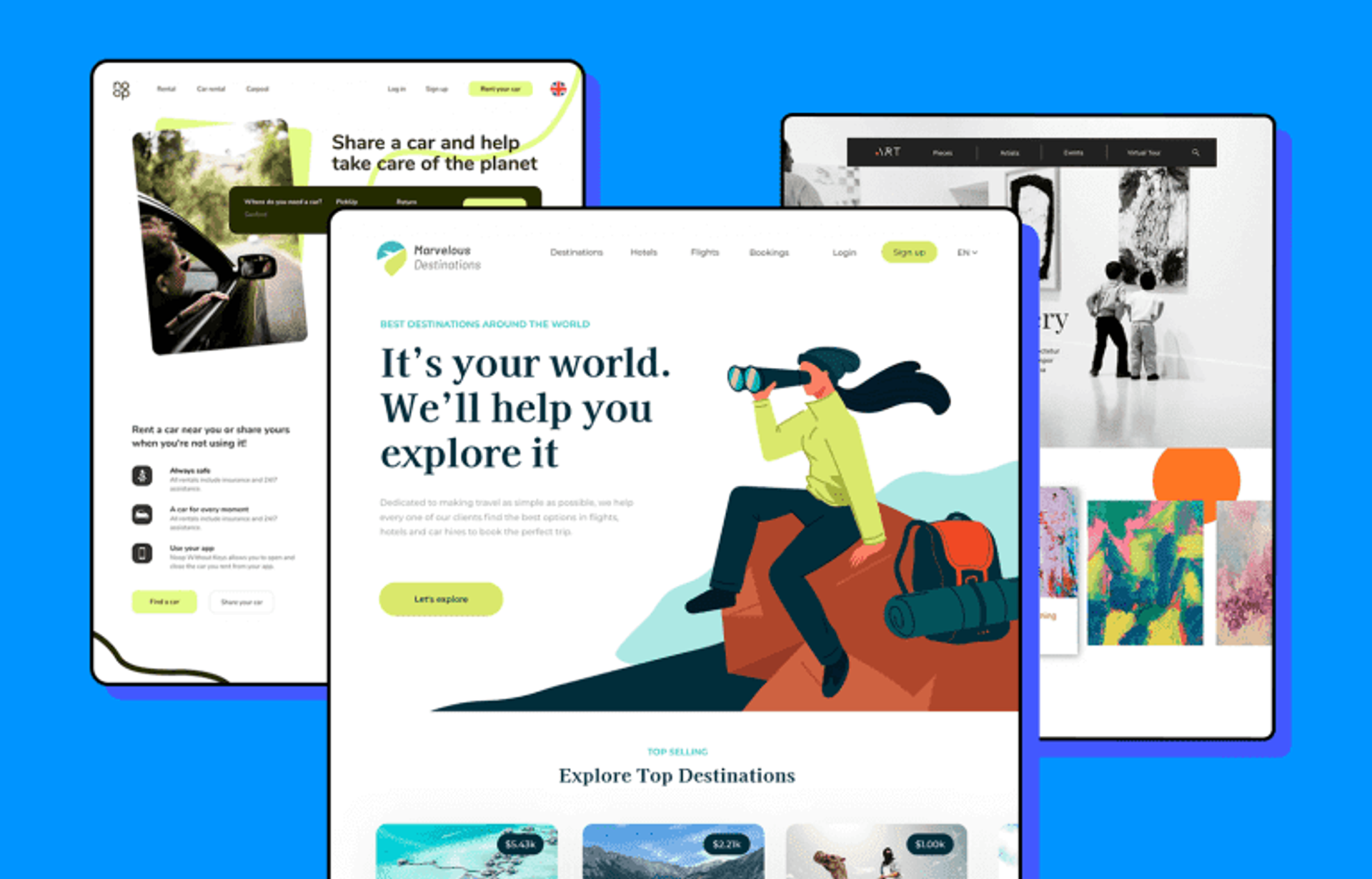Boost Your Business With Responsive and User-Friendly Web Style
In a period where electronic interactions determine consumer habits, the value of responsive and user-friendly web design can not be overemphasized. A well-structured web site not just fits different devices yet additionally boosts the total individual experience, cultivating better involvement.
Importance of Responsive Layout
In today's digital landscape, a significant bulk of web website traffic originates from smart phones, highlighting the vital value of responsive layout. As customers increasingly access web sites with smartphones and tablet computers, companies have to guarantee that their on the internet existence is enhanced for various screen sizes and resolutions. las vegas web design. Receptive layout not only improves user experience yet likewise plays an essential role in seo (SEARCH ENGINE OPTIMIZATION), as search engines focus on mobile-friendly websites

In enhancement to boosting user contentment, responsive design can provide a competitive benefit. In a marketplace where electronic interactions are extremely important, companies that focus on responsive internet design placement themselves as forward-thinking, boosting their brand name credibility and eventually driving conversions.

Trick Components of User-Friendly Design
Developing an easy to use layout entails several essential elements that enhance functionality and guarantee a favorable interaction with the website. First and primary, simpleness is critical; a clean, minimalist layout enables users to navigate easily. Instinctive navigation is another crucial component, enabling users to find info swiftly without confusion. This can be accomplished with clear food selections, rational structuring, and constant positioning of navigating buttons.
Additionally, readable typography plays a significant role in user experience. Choosing understandable typefaces and appropriate sizes ensures that individuals can conveniently consume material without stressing their eyes. Reliable use shade and comparison not just improves appearances yet additionally boosts readability and availability for individuals with aesthetic impairments.
Moreover, integrating interactive aspects such as switches and web links that are clearly specified and effectively spaced urges individual engagement. Comments mechanisms, like hover impacts or confirmation messages, further enhance the communication by offering customers with reassurance that their actions have been acknowledged.
Finally, optimizing tons times can considerably impact individual complete satisfaction. A fast-loading web site lowers bounce prices and keeps users involved, eventually cultivating a more beneficial assumption of the brand name. By concentrating on these components, organizations can produce an easy to use style that drives success.
Benefits of Mobile Optimization
Mobile optimization is vital for contemporary websites, as individuals increasingly count on their mobile phones and tablets for surfing. Individuals can conveniently browse a mobile-optimized site, which boosts their overall experience and enhances the chance of engagement.
In addition, mobile optimization can result in greater internet search engine rankings. Look engines like Google prioritize mobile-friendly internet sites in their algorithms, indicating that companies with optimized sites are much more most likely to appear in search outcomes. internet This presence can drive much more natural traffic and possible customers to business.
Additionally, mobile optimization minimizes bounce prices. When customers experience an internet site that is challenging to browse or reduce to load on their mobile gadgets, they are most a fantastic read likely to leave and seek alternatives. By supplying a smooth experience, businesses can preserve users and transform visits into sales.
Enhancing Individual Experience
A well-optimized internet site not only caters to mobile users yet also significantly enhances general individual experience. By including receptive layout principles, companies can guarantee that their web sites are obtainable across various gadgets and screen sizes, producing a seamless browsing experience. This versatility promotes customer involvement, as site visitors are much less most likely to encounter aggravating navigation issues or altered web content.
Moreover, a straightforward user interface streamlines communications, permitting users to find information or full deals with simplicity. Components such as instinctive menus, clear calls-to-action, and visually enticing layouts add to a favorable experience, urging individuals to spend more time on the website. Rapid filling times are one more crucial facet, as slow-moving internet sites can bring about high bounce prices and disappointed customers.
On top of that, boosting individual experience includes considering the demands of varied audiences. Executing attributes such as alt message for images and making certain high contrast between message and background can make websites extra available to individuals with handicaps. Eventually, prioritizing user experience not just satisfies existing consumers but additionally draws in brand-new ones, establishing a strong structure for company development in a progressively digital landscape.
Determining Success and ROI
Measuring success and roi (ROI) in responsive internet design is necessary for understanding its influence on company performance (las vegas web design). To successfully gauge the success of a receptive web design effort, companies need to establish essential efficiency indicators (KPIs) that line up with their purposes. Common KPIs consist of conversion prices, bounce rates, customer involvement metrics, and ordinary session durations
Tracking these metrics with analytics tools allows organizations to evaluate exactly how well the receptive design satisfies customer demands across devices. A high conversion price, as an example, suggests that users are not only checking out the website but are also taking preferred activities, such as purchasing or registering for a newsletter.
Companies need to additionally think about qualitative comments from users, as this can provide understandings right into individual fulfillment and areas for enhancement. By continuously determining success and ROI, companies can make informed choices Continue to improve their web visibility, making certain that their receptive design strategies generate ideal results and foster long-lasting development.
Final Thought
